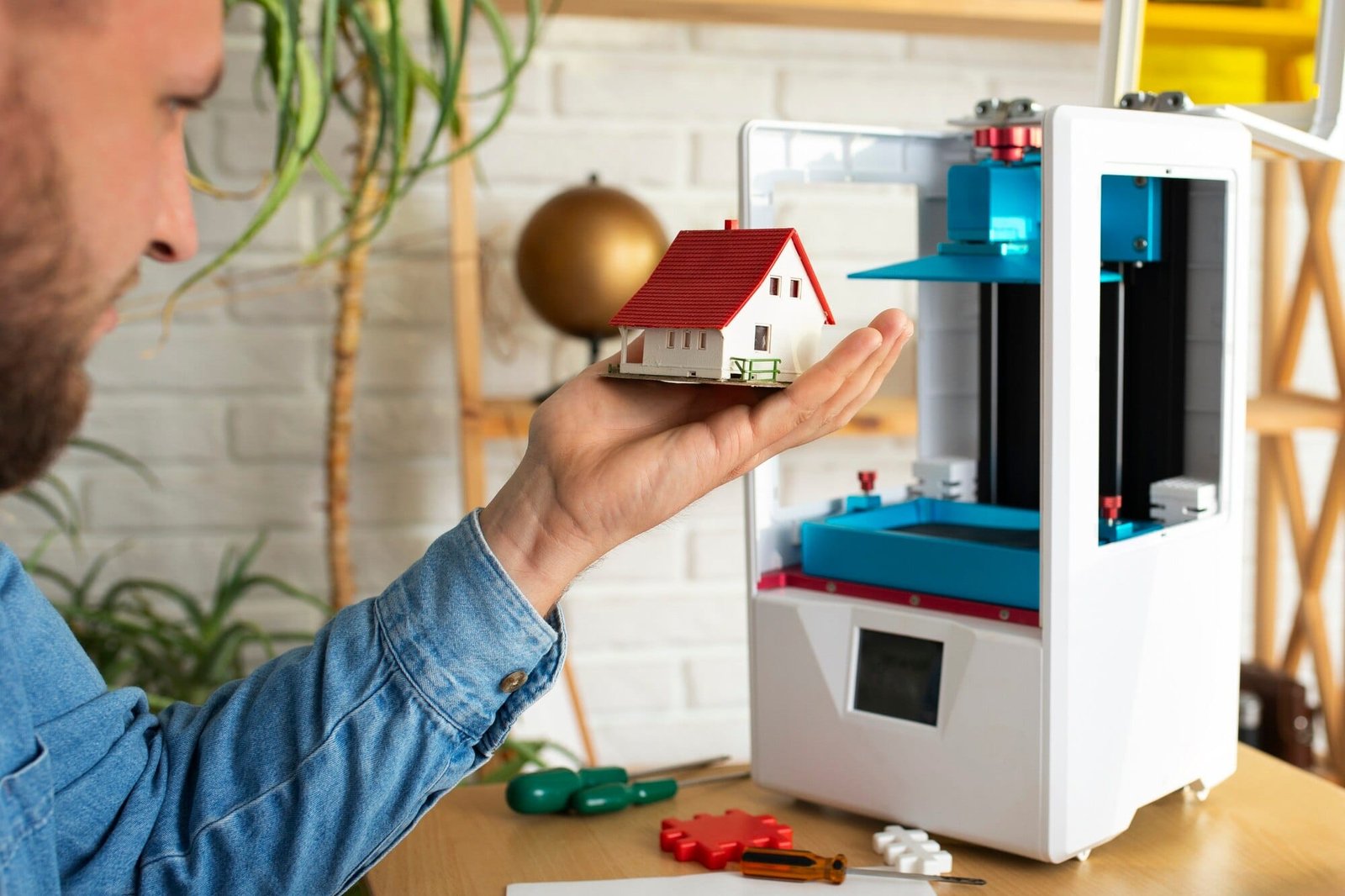Technology is rapidly reshaping the construction industry, and one of the most revolutionary advancements is 3D printing. What once seemed like science fiction is now a reality, with 3D-printed building materials offering a new level of efficiency, sustainability, and customization in architecture and construction.
At VMC Group, we closely follow the latest trends in 3D printing for construction to integrate innovative and sustainable solutions into our projects. In this article, we explore how 3D printing is transforming building materials and what it means for the future of construction.
The Rise of 3D Printing in Construction
3D printing, also known as additive manufacturing, is a process that builds objects layer by layer using a variety of materials, such as concrete, polymers, metals, and recycled materials. In construction, this technology enables the direct fabrication of walls, structures, and even entire buildings with unprecedented precision and efficiency.
Key benefits of 3D printing in construction:
- Faster construction timelines: 3D printers can construct entire homes in just a few days.
- Reduced material waste: Printing only the necessary amount of material minimizes waste.
- Lower labor costs: Automation reduces reliance on extensive manual labor.
- Greater design flexibility: Complex geometries and custom structures can be created with ease.
How 3D Printing is Changing Building Materials
3D printing is not only changing the way buildings are constructed but also the materials used in the process. Here are the most significant ways 3D printing is revolutionizing building materials.
1. 3D-Printed Concrete: Stronger, Faster, and More Sustainable
Why It Matters: Traditional concrete construction involves heavy labor, formwork, and material waste. 3D-printed concrete eliminates these inefficiencies while maintaining strength and durability.
Key Innovations:
- Layered extrusion technology: Creates seamless walls with precise control.
- Carbon-infused concrete: Enhances structural integrity while reducing emissions.
- Self-healing concrete: Incorporates bacteria that repair cracks automatically.
Applications:
- 3D-printed homes and office buildings.
- Bridge and infrastructure components.
- Custom facades and architectural features.
2. Recycled Materials: 3D Printing for a Sustainable Future
Why It Matters: Traditional construction generates vast amounts of waste, while 3D printing with recycled materials promotes a circular economy.
Key Innovations:
- Plastic-based printing: Converts industrial and household plastic waste into durable building components.
- Recycled concrete: Uses crushed demolition waste as a base material for new construction.
- Bio-based printing materials: Hempcrete and algae-based composites offer eco-friendly alternatives.
Applications:
- Eco-friendly housing projects.
- Recycled concrete structures in urban development.
- Biodegradable buildings and temporary shelters.
3. 3D-Printed Metal Structures: The Future of High-Strength Buildings
Why It Matters: Metals like steel and aluminum are crucial in high-rise buildings, but their traditional fabrication is costly and wasteful. 3D metal printing enables efficient, custom-designed components with reduced waste.
Key Innovations:
- Laser sintering technology: Melts metal powder to form precise structures.
- Topology optimization: Creates lightweight, high-strength structural elements.
- Robotic metal printing: Automates fabrication for complex architectural forms.
Applications:
- Custom steel components for skyscrapers.
- Bridges and load-bearing elements.
- High-performance modular building systems.
4. Smart and Adaptive 3D-Printed Materials
Why It Matters: 3D printing allows for the integration of smart materials that can respond to environmental changes, improving building performance.
Key Innovations:
- Shape-memory polymers: Materials that adjust their structure based on temperature changes.
- Self-assembling structures: Buildings that unfold or expand autonomously.
- Printed solar panels: Integrating photovoltaic cells directly into walls and facades.
Applications:
- Smart buildings with energy-efficient adaptations.
- Disaster-resistant homes with self-healing properties.
- Off-grid sustainable housing solutions.
The Impact of 3D Printing on the Construction Industry
1. Lower Construction Costs
- Automation reduces labor expenses.
- Precise material usage minimizes waste.
- Faster project timelines reduce financing costs.
2. Increased Sustainability
- 3D-printed structures use fewer raw materials.
- Recycled components reduce landfill waste.
- Energy-efficient designs lower carbon footprints.
3. Customization and Design Freedom
- Architects can create complex, organic shapes.
- Modular designs enable personalized building solutions.
- Affordable housing can be tailored to diverse needs.
4. Improved Building Performance
- Stronger, more durable materials extend building lifespan.
- Integrated smart features enhance energy efficiency.
- Prefabricated, factory-printed parts improve construction accuracy.
Real-World Examples of 3D-Printed Buildings
1. Apis Cor’s 3D-Printed House (Russia)
Apis Cor built a 3D-printed home in under 24 hours, demonstrating the speed and efficiency of additive manufacturing in residential construction.
2. Dubai’s 3D-Printed Office
Dubai is leading the way with its fully 3D-printed office building, which reduced construction waste by 60%.
3. MX3D’s 3D-Printed Steel Bridge (Netherlands)
This robotic-printed bridge showcases the potential of 3D metal printing in infrastructure projects.
Final Thoughts: The Future of 3D-Printed Building Materials
3D printing is reshaping the future of construction by offering faster, more cost-effective, and sustainable solutions. From printed concrete homes to smart adaptive materials, the possibilities are limitless.
Read: Why Insulated Metal Panels Are Ideal for Commercial Buildings
At VMC Group, we are committed to exploring the potential of 3D printing technology to deliver cutting-edge, sustainable, and efficient construction solutions. Contact us today to learn how we can integrate 3D-printed materials into your next project!



